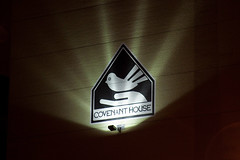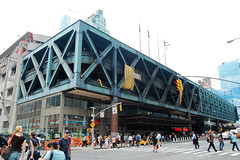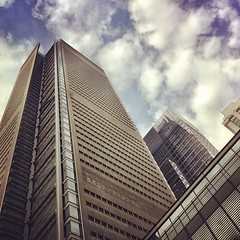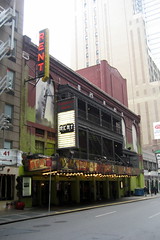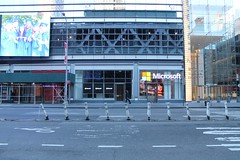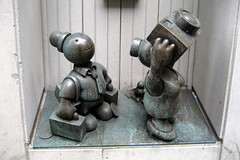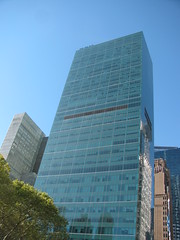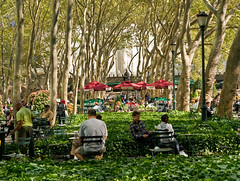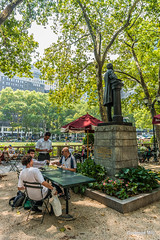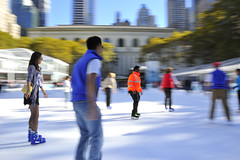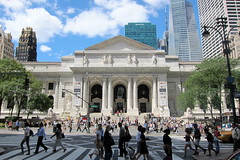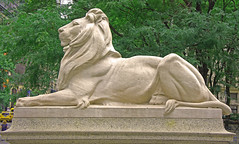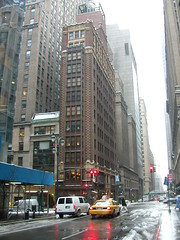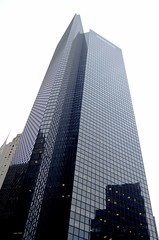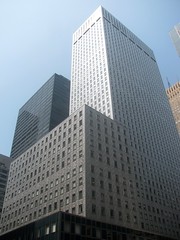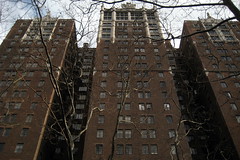South:
504-508: Saints Cyril & Methodius and
St. Raphael Croatian Catholic Church,
built in 1914 as St. Raphael, honoring the archangel
associated with healing. Originally an Irish parish,
it became Italian-American and then Croatian,
when it adopted as patron saints the
brothers who evangelized the Slavs.
|
W
|
North:529-33: Was Valentin Loewer's Gambrinus Brewery, named for a legendary inventor of beer. (The building featured his statue, as well as a copper-sheathed cupola with a clock.) Producing 200,000 barrels a year, it was the largest of several west-side breweries, as well as the last to stay in business, closing in 1948. 505-515: Were New York Fireproof Tenements, since demolished;
507-511 housed Catholics Boys' Club.
|
